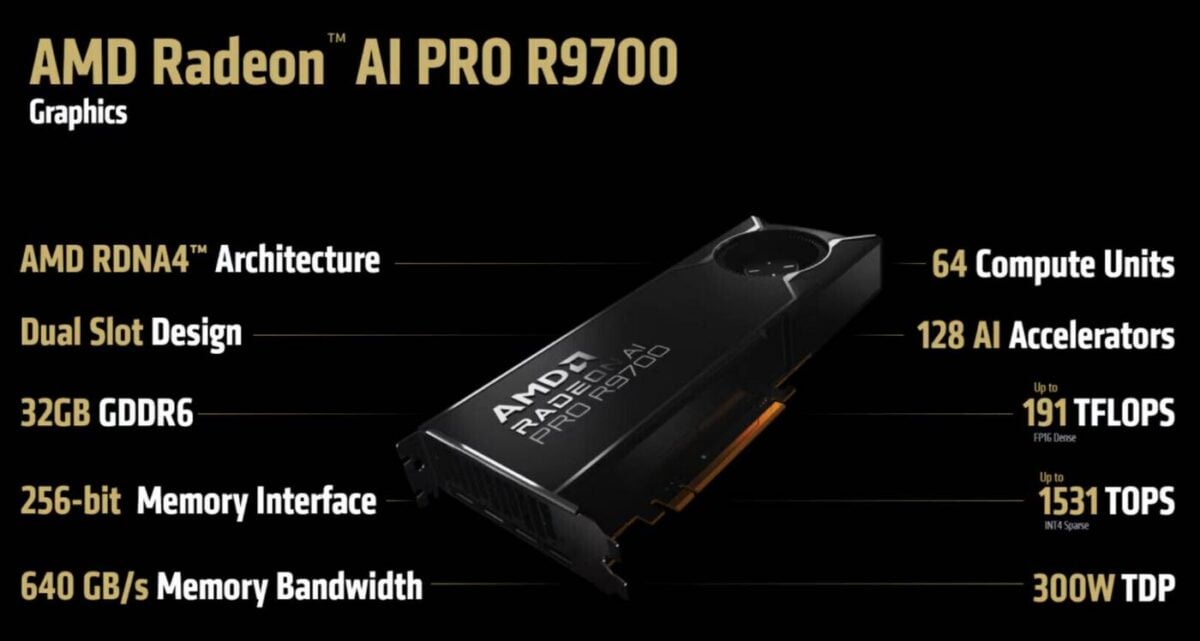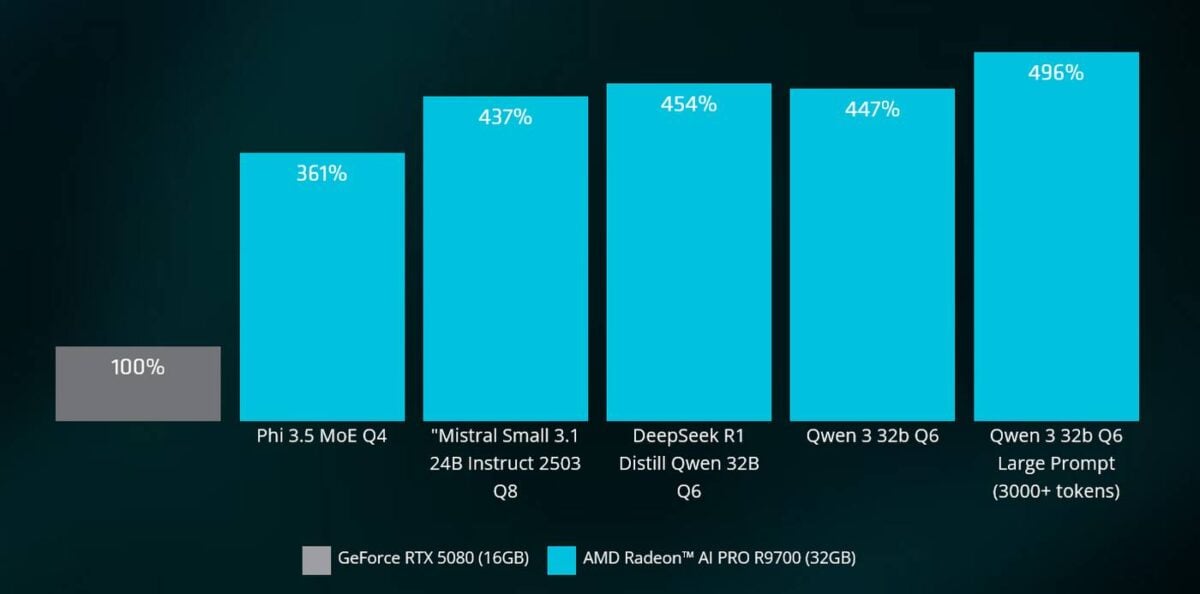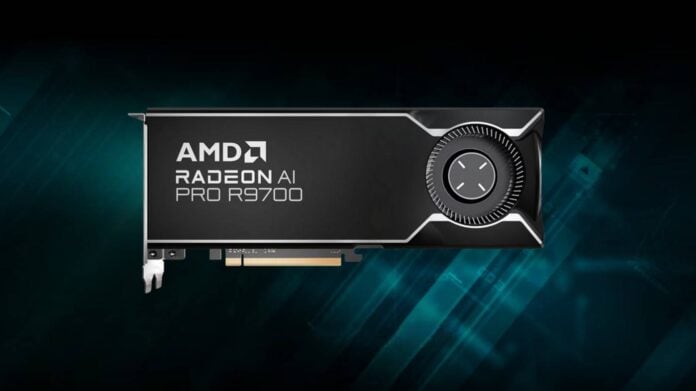AMD is finally ready to bring its Radeon AI Pro R9700 GPU to the DIY market, offering another alternative for professionals running machine learning and virtualisation workloads. The launch is set for October 27, at $1,299, giving users the opportunity to grab one without needing to shell out for a complete system.
Up until now, the card has been available exclusively through OEMs and system integrators as part of complete workstations. AMD was originally rumoured to be targeting a July launch for the standalone card, but supply constraints prevented it from doing so. All available inventory was instead supplied to OEMs in a move to prioritise the pre-built market. This left many DIY users and professionals searching for a suitable alternative, for which the likes of the Arc Pro B60 Dual might have filled a gap.

The Radeon AI Pro R9700 is based on the Navi 48 GPU and shares significant commonality with the gaming RX 9070 XT, featuring 64 RDNA 4 compute units clocked up to 2,920MHz, 64MB of 3rd-gen Infinity Cache, and 128 AI accelerators. The key differentiator for AI Pro R9700, and the main reason AMD can charge such a premium over the $599 RX 9070 XT, is 32GB of 20Gb/s GDDR6 memory running on a 256-bit bus, resulting in 640GB/s of bandwidth.
When it comes to raw performance, the Radeon AI Pro R9700 achieves up to 383TFLOPs of half precision (FP16 Matrix), 766TFLOPs of 8-bit precision (FP8 Matrix), and 1,531TOPs of 4-bit precision (INT4 Matrix), all within a 300W power budget. Using in-house benchmarks that should always be taken with a pinch of salt, AMD claims the Radeon AI Pro R9700 can be up to 496% faster in handling large AI models compared to Nvidia’s GeForce RTX 5080, thanks to its 32GB memory pool.

The reference model is designed for multi-GPU setups, leveraging a dual-slot, blower-style cooler. AMD has previously demonstrated quad-GPU configurations, geared specifically for scenarios that demand top-notch credentials for local AI inference. An initial crop of partner cards from popular AIBs such as Sapphire and Gigabyte sensibly maintain a dual-slot format, with the majority also sticking to quad DisplayPort 2.1 outputs and dual two 8-pin power connectors.
Whether you opt for one or more, the Radeon AI Pro R9700 will almost certainly be in high demand amid the ongoing AI boom. With 32GB of VRAM and support for AMD ROCm, it ticks the right boxes for large language and diffusion models. That said, if you can convince the boss you need one for work, there’s no reason this can’t double as a 32GB gaming card when nobody’s looking.


